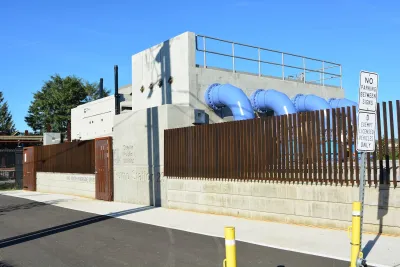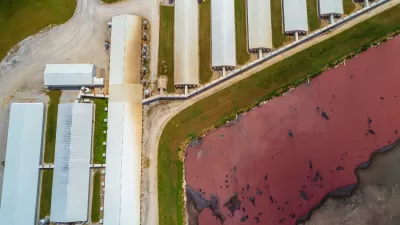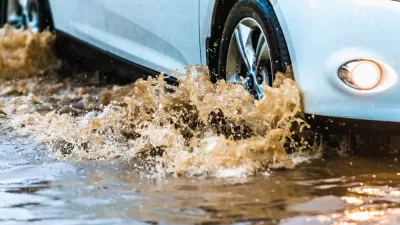The $700 million ‘stormwater subway’ is designed to handle overflows during storms, which contain toxic runoff from roadways and vehicles.

A new, $700 million Seattle tunnel with a diameter large enough to fit a single track train is actually designed solely for wastewater, writes Joe Cortright in City Commentary.
As Cortright explains, “The reason for this tunnel—as in many cities in the US—is to deal with periodic sewer overflows when it rains. Seattle has a system of combined storm and sanitary sewers–so stormwater mixes with domestic wastewater, which is a problem during heavy rains. The system is sized to avoid overflows when its just handling domestic sewage, but the water flows during the rainy season exceed the capacity of the system.”
Cortright notes that half of stormwater comes from parking lots and roadways, “and much of the toxicity of stormwater is from cars and trucks (oil, tire debris, brake dust and precipitated air pollution)” — so transportation is directly responsible for added costs for sewer and stormwater infrastructure, but drivers do not contribute directly to costs. “Instead, the cost of sewage subways gets build to urban households, many of whom don’t even drive.”
According to Cortright, the city’s approach to water pollution is “both inefficient and inequitable: inefficient because we’re not sending any incentives to people to drive less, and inequitable because we’re not asking the people causing much or most of the pollution to pay for the solution.” In this way, “Not asking road users to pay for the cost of the subway built to handle their toxic runoff, and instead loading it on to the bills of households or businesses, makes driving artificially cheap, and city-living artificially expensive.”
FULL STORY: Seattle’s new subway!

Planetizen Federal Action Tracker
A weekly monitor of how Trump’s orders and actions are impacting planners and planning in America.

Restaurant Patios Were a Pandemic Win — Why Were They so Hard to Keep?
Social distancing requirements and changes in travel patterns prompted cities to pilot new uses for street and sidewalk space. Then it got complicated.

Map: Where Senate Republicans Want to Sell Your Public Lands
For public land advocates, the Senate Republicans’ proposal to sell millions of acres of public land in the West is “the biggest fight of their careers.”

Maui's Vacation Rental Debate Turns Ugly
Verbal attacks, misinformation campaigns and fistfights plague a high-stakes debate to convert thousands of vacation rentals into long-term housing.

San Francisco Suspends Traffic Calming Amidst Record Deaths
Citing “a challenging fiscal landscape,” the city will cease the program on the heels of 42 traffic deaths, including 24 pedestrians.

California Homeless Arrests, Citations Spike After Ruling
An investigation reveals that anti-homeless actions increased up to 500% after Grants Pass v. Johnson — even in cities claiming no policy change.
Urban Design for Planners 1: Software Tools
This six-course series explores essential urban design concepts using open source software and equips planners with the tools they need to participate fully in the urban design process.
Planning for Universal Design
Learn the tools for implementing Universal Design in planning regulations.
Heyer Gruel & Associates PA
JM Goldson LLC
Custer County Colorado
City of Camden Redevelopment Agency
City of Astoria
Transportation Research & Education Center (TREC) at Portland State University
Camden Redevelopment Agency
City of Claremont
Municipality of Princeton (NJ)





























